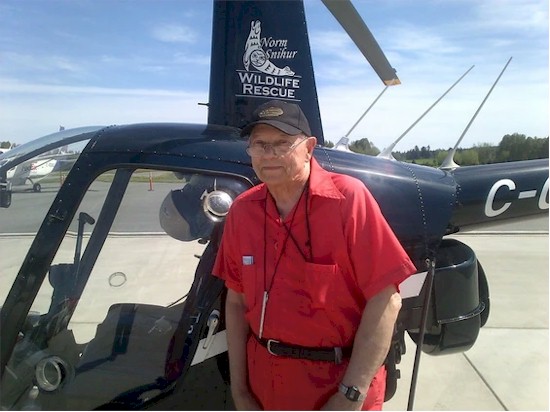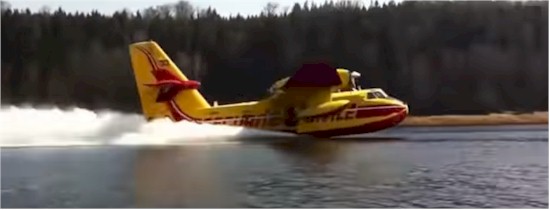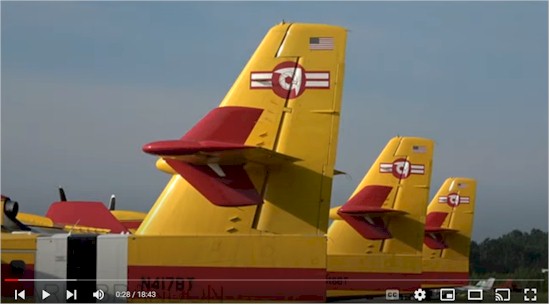Shirlee Schacter sent us this smiley which she found in the Quora Digest recently (posted by Lars Vinter).
What is the coolest line a pilot has said to the passengers?
The captain on a Scandinavian Airlines (SAS) flight once said: “Ladies and gentlemen, it won't be a full flight today. So could I just ask all passengers who have an aisle or middle seat to move to the window. This way, the other airlines will still think we are successful.”
Shirlee commented that SAS has certainly seen their share of troubles and have filed Chapter 11 Bankruptcy in the United States. It was just in the news that a US private equity firm called Apollo (ironic?) may take a majority stake in the company. So really there could be some truth to that joke.
Shirlee
|
John Amy shares this memory.- Regarding King Charles' horse being the first equine transport for Air Canada Cargo mentioned in NetLetter #1511. On my final flight for Air Canada in a B-747-400 (Flt 862/23 October 1998), the cargo load included 26 race horses and one more that had been given to the Queen by the RCMP. It was not unusual to carry horses. John Amy Editors' Note: John is, of course, correct. Reviewing the reference article at www.aviacionline.com, it may be referring to the first transport of a horse on a B-767-300F in a new specifically designed stall. |
|
Captain Norm Snihur, retired, shares this memory - DC-8 Manual #3 engine start 1970's During 14 years on the DC-8, one manual engine start valve activation was required at Edmonton International Airport (CYEG). Early morning winter departure, after the aircraft sat overnight in sub zero temperatures. The start valves operated in response to flight deck engine start switch selection, and would route high pressure air to the air-operated start motor. The valves were fitted with a manual start lever that would be selected off when the engine start sequence was stabilized. The mechanic was unable to manually turn the lever. It was decided to employ a conveniently located 2" x 4" to loosen the lever with a tap. Several taps were required, which did not go unnoticed by passengers, either on the aircraft, or in the terminal. After the engine stabilized it was possible to return the lever to the off position with hand pressure. The use of lumber to effect the #3 engine start was reported to the company. A notice was issued that it would be preferred if this type of ramp activity should, where possible, be done out of view of passengers. Norm Snihur, Wings4wildaid Rescue & Transport. More about Captain Snihur @ vancouversun.com/news |
 |
|
Photo by Lorinne Anderson - Vancouver Sun |
|
New U.S. subscriber Richard Kruszka sent in the following - I came across your newsletter when I was doing a search on Nordair and I must say, I was very impressed with the content and I clearly have a lot of catch-up to do on reading this summer! My interest in the airline industry started in 1972 when my father brought home an OAG, which I read nearly cover-to-cover. I then worked in the industry with Empire, American, and Qantas for 15 years. From my early recollections, I was just curious if you had articles on some of the Canadian regional and commuter airlines like Pem Air, Northern Wings, International Jet Air, Wagner Aviation, and others, most of which are now well-forgotten? I will be certain to read through your content but with my career starting with Empire, I've always had an interest in the smaller aspects of the industry and have considered writing some articles for various publications. I'd appreciate your comments. Thanks very much and I look forward to hearing from you soon. Rich Kruszka Editors' Note: Rich's suggestions will definitely have us doing some research on the airlines mentioned. |
|
|
|
Excerpt from en.wikipedia.org/wiki/Canadair_CL-215 The Canadair CL-215 is a twin-engine, high-wing general-purpose amphibious aircraft. It features an atypically spacious fuselage for an amphibian, which is designed to accommodate for the operational needs of various roles that the aircraft was developed to perform. The CL-215 can be used as an airborne firefighting platform, in which capacity it is used as a water bomber; it has been claimed to be the first aircraft designed to withstand the severe aerodynamic and hydrodynamic loads imposed by such usage. Beyond the water bomber role, the CL-215 was designed for use in other capacities, such as a search and rescue platform, passenger transport, and freighter; for this purpose, the cabin can be configured in various different ways, including a flexible combi configuration. The CL-215 was designed to perform well in the aerial firefighter role. The apparatus is designed around previously-proven concepts and careful design.The aircraft's belly houses a pair of 1,400 litres (300 imperial gallon) water tanks of which large downward-facing doors forms their bottoms; these open to rapidly discharge water over a target area. Bombardier Aerospace acquired Canadair during the 1980's and decided to terminate production of the type during the late 1980's. Although manufacturing did come to an end in 1990, a further improved model, designated as the CL-415, entered production during 1993. The last newly-built CL-415 was delivered in 2015 when production ended. Additionally, multiple conversion and refit programmes have been launched over the following decades to renovate and improve existing aircraft, typically focused on improving aspects such as the engines, avionics and structure. In 2018 Bombardier sold their design documents, and intellectual property rights, to the CL-215 and CL-415 to Viking Air who announced plans to open a production line to build the CL-515, an improvement over the CL-415, with more recent avionics, instrumentation to allow it to continue fighting fires at night, and the ability to fill other roles, like maritime surveillance, and maritime search and rescue, when it wasn't fire season. Editors' Note: Currently there are 54 CL-215, -215T and -415 aircraft registered in Canada. Note that -215T designates aircraft originally built with Pratt & Whitney R-2800 piston engines (as used on DC-6) and later converted to turboprops. Those factory-built with turboprops are designated CL-415. The 2nd CL-215 built, with the original piston engines, is still flying at age 55 (built 1968) with Yellowknife, Northwest Territories-based Buffalo Airways. |
|
Click the image below for the YouTube video, posted by Polyus, detailing the history, development and current status of this 'Scooper' firefighting series of aircraft. |
 |
|
Water Bombing Workhorse That Keeps On Evolving; |
Photographs submitted by subscribers.


